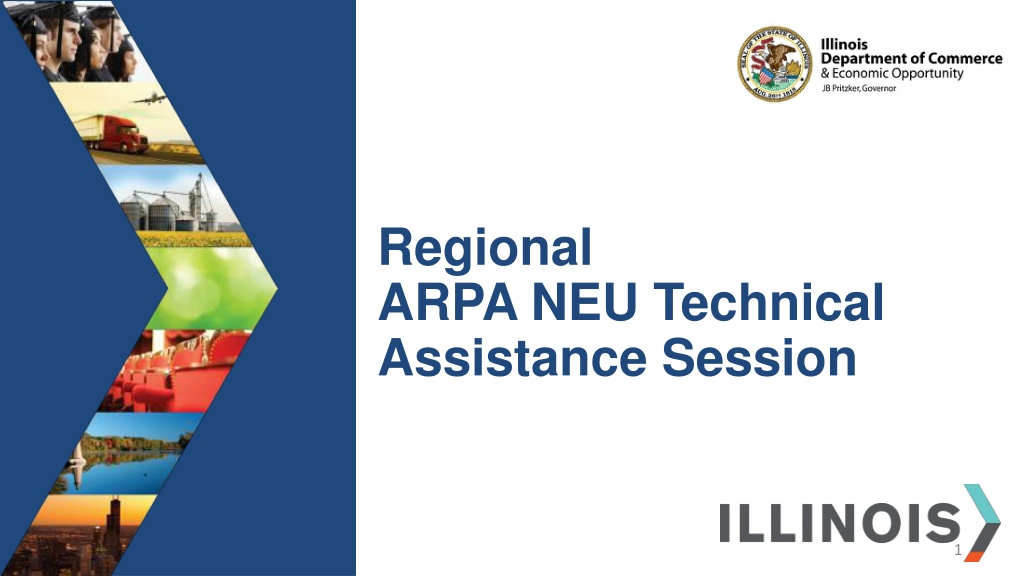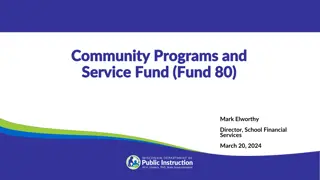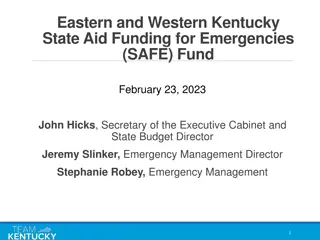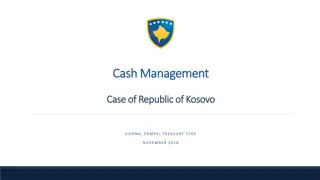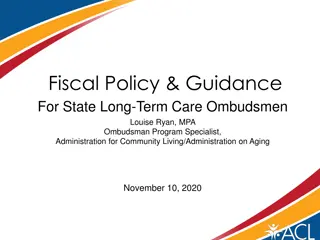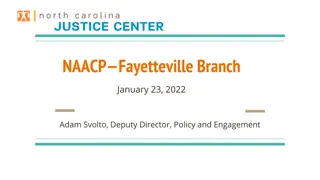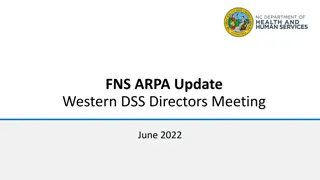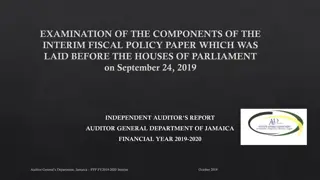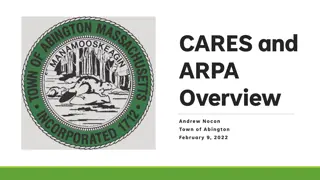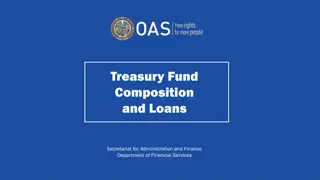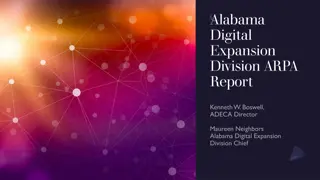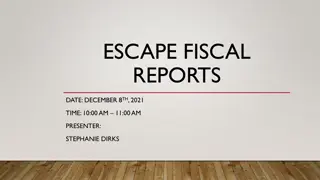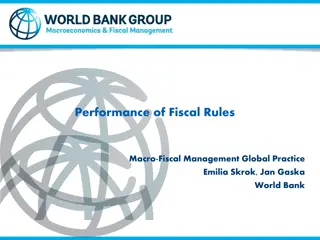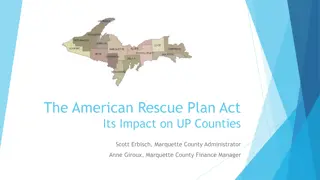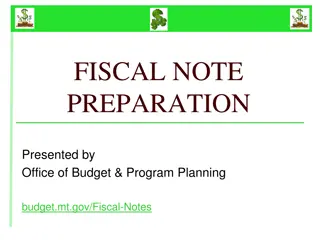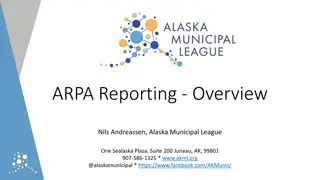Guidance on U.S. Treasury Final Rule for ARPA State & Fiscal Recovery Fund
The U.S. Treasury issued the Final Rule for the ARPA State & Fiscal Recovery Fund, effective from April 1, 2022. This rule introduces noteworthy changes including a standard allowance for revenue loss, flexibility in using funds for government services, public health, economic impacts, and more. Recipients can now benefit from streamlined reporting requirements and expanded eligible use categories to support their communities.
Download Presentation

Please find below an Image/Link to download the presentation.
The content on the website is provided AS IS for your information and personal use only. It may not be sold, licensed, or shared on other websites without obtaining consent from the author. Download presentation by click this link. If you encounter any issues during the download, it is possible that the publisher has removed the file from their server.
E N D
Presentation Transcript
Regional ARPA NEU Technical Assistance Session 1
U.S. Treasury Final Rule The ARPA State & Fiscal Recovery Fund( SLFRF ) Final Rule was issued by the U.S. Treasury on January 6, 2022. The Final Rule is effective as of on April 1, 2022. Until then, Interim Final Rule remains in effect. However, new provisions of the final rule can be implemented prior to the effective date. The Final Rule provides broader flexibility and greater simplicity in the program based on feedback from participants. The Overview of the Final Rule provides a summary of major provisions of the final rule for informational purposes and is intended as a brief, simplified user guide to the final rule provisions. 2
Noteworthy Changes Revenue Loss Introduction of Standard Allowance: The final rule offers a standard allowance for revenue loss of $10 million, allowing recipients to select between a standard amount of revenue loss or complete a full revenue loss calculation. Recipients that select the standard allowance may use that amount in many cases their full award for government services, with streamlined reporting requirements. Standard allowance does not require an entity to calculate its lost revenue, as Treasury conducted extensive analysis and recognizes revenue has been lost due to the public health emergency. Treasury recognizes the standard allowance will benefit SLFRF s smallest recipients (e.g., NEUs). 3
Noteworthy Changes Revenue Loss Using Funds for the Provision of Government Services: Government services generally include any service traditionally provided by a government and is the most flexible eligible use category under the SLFRF program. Treasury provides common examples: o Construction of schools and hospitals o Infrastructure such as building roads, road maintenance and sidewalks o Health services o General government administration, staff and administrative facilities o Environmental remediation o Provision of police, fire and other public safety services, including the purchase of vehicles 4
Noteworthy Changes Public Health & Economic Impacts: Final Rule clarifies that recipients can use funds for capital expenditures that support an eligible COVID-19 public health or economic response, such as affordable housing, childcare facilities and other projects. Final Rule expands what households and communities that are presumed impacted and disproportionately impacted by the pandemic. Final Rule allows for a broader set of uses to restore and support government employment, including using funds for employees who experienced furloughs, avoiding layoffs and providing retention incentives. Proposed examples in Illinois: Homeowner rehab program, neighborhood mini grants; retaining the Health & Human Services Department s COVID-19 response staff; Community Gun Violence Reduction program 5
Noteworthy Changes Water, Sewer & Broadband Infrastructure: Final Rule broadens eligible broadband infrastructure investments, including access, affordability and reliability. For more info on IL broadband opportunities, visit Connect Illinois. Final Rule provides examples of additional eligible projects for water and sewer, including stormwater infrastructure, residential wells, lead remediation and dam/reservoir work. All water and sewer infrastructure projects should follow EPA handbooks Drinking Water State Revolving Fund and Clean Water State Revolving Fund. Proposed examples in Illinois: Broadband investment matched $ for $ by telecom company; storm water runoff prevention; lead remediation in homes 6
Ineligible Uses Restrictions on Use of SLFRF: To offset a reduction in net tax revenue. To deposit into pension funds. To service debt or replenish financial reserves (e.g., rainy day funds). To satisfy legal settlements and judgements. Any use that conflicts or contravenes the purpose of the ARPA statute. 7
Other Examples Proposed uses in IL communities: Non-profit capital grant program Cybersecurity Fa ade improvement program Childcare assistance Job training for unemployed persons Commercial rent reduction program Grants for small business growth, expansion, and product development Starting a Health Equity Fund Small business Revolving Loan Fund 8
Reporting Guidance: Program Timeline: Funds must be used for costs incurred on or after March 3, 2021, and be obligated by December 21, 2024, and expended by December 31, 2026. Annual Reporting Obligation: o Project and Expenditure Reports are due annually on April 30th. o The 1st annual report is due April 30, 2022, for the period ending March 31, 2022. o Future annual reports are due on April 30th thereafter. o Treasury more detailed reporting guidance for NEUs is forthcoming. o Funds do not need to be spent by the first reporting period, but NEUs are still obligated to submit a report by the deadline. 9
Key Resources: IL Main NEU Site http://illinois.gov/dceo/neu IL Broadband Site https://www2.illinois.gov/dceo/ConnectIllinois/Pages/default.aspx U.S. Treasury ARPA SLFRF Site https://home.treasury.gov/policy-issues/coronavirus/assistance-for-state-local-and-tribal- governments/state-and-local-fiscal-recovery-funds 10
For additional questions: please email us at ILARPA@crowe.com We want to hear from you! What are some of your potential uses of ARPA funds? Or Contact your Regional Economic Development Manger 11
